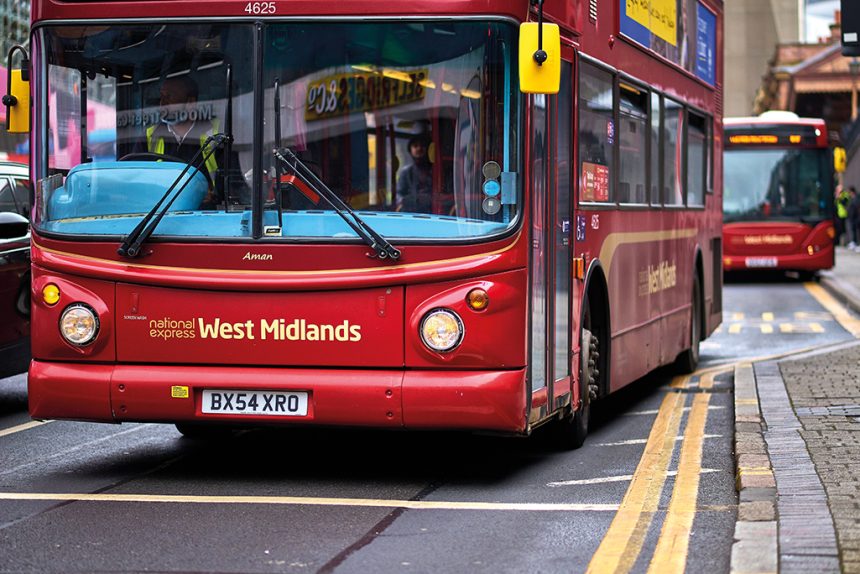As the Bus Services (No. 2) Bill moves through Parliament, it brings with it an overdue acknowledgement of the risks and responsibilities facing today’s bus drivers.
Among its proposals is the power to mandate training in identifying, responding to, and, where possible, preventing antisocial behaviour and crime, with an emphasis on supporting women, girls, and disabled passengers.
This is a positive step, but for those with lived experience behind the wheel, it’s hard to escape the feeling that we’ve seen this all before — another top-down obligation layered onto the shoulders of a workforce already stretched to breaking point.
The idea of driver training as a catch-all solution is only persuasive to those unfamiliar with the daily pressures faced by drivers. If the Bill’s ambitions are to be realised, they must be accompanied by meaningful reform and operational backing — because training alone won’t fix what’s broken.
The public perception of bus driving remains woefully disconnected from the lived reality. Driving a bus is physically and mentally demanding — a relentless, high-stakes exercise in judgment, coordination, and resilience. Yet the complexity of the role is often overlooked.
Each shift begins with a tight window, barely 10 minutes, for a thorough vehicle inspection. Delays in the depot, blocked exits, and last-minute diversions can raise stress levels before a wheel even turns.
Once on the road, drivers must contend with roadworks, illegally parked cars, and unpredictable passenger behaviour. Every minor mishap can lead to a formal investigation. Every decision is scrutinised. Schedules are punishing. Welfare breaks are often curtailed due to delays, and on many routes, there are no reliable facilities for rest or refreshment.
The result? Drivers frequently limit water intake to avoid needing the toilet, an unhealthy coping strategy that risks long-term health issues, and then there’s the abuse.
Physical threats. Verbal assaults. Fare disputes that escalate quickly. Rowdy groups are emboldened by free travel schemes. These are not rare occurrences — they are regular features of the job. Yet drivers are often left to manage it all alone.
Yes, training is valuable. Any responsible operator already provides some form of safeguarding and de-escalation instruction. But the reality is that knowledge without backup isn’t enough.
A recent high-profile assault on a driver, in which the attacker exploited a faulty cab lock, stands as a grim reminder of the risks faced when vehicle security and enforcement presence fall short. The case has dragged on for nearly two years. The driver continues to suffer the psychological effects.
This is not an isolated incident, and it underscores the limits of training in the absence of working infrastructure and active enforcement. Many routes never see a uniformed officer. ‘Travel Safe’ teams exist in policy but rarely appear in practice. Without visibility, deterrence is lost, and drivers are left to absorb the fallout.
The result? High turnover, increased absenteeism, and early retirements from a profession many once saw as a long-term career.
Scotland offers a clear example of what happens when good intentions meet limited enforcement. Free bus travel for under-22s, while socially progressive, has been accompanied by a spike in antisocial behaviour.
The issue has reached Parliament, but responses remain fragmented. One MSP has even suggested tying reimbursement to operator action, missing the point that drivers cannot and should not be expected to police the system alone.
Without consistent enforcement, CCTV, and on-board support, the message sent to perpetrators is clear: No one is watching, and nothing will happen. Until that changes, antisocial behaviour will remain a deterrent to passengers and a threat to drivers.
The Bus Services (No. 2) Bill is a chance to change course, but only if we address the structural and operational failings that training cannot solve.
Five priorities stand out:
- Reduce maximum driving hours: Current limits fail to reflect the mental strain and fragmented break patterns common to the job
- Guarantee rest breaks and welfare facilities: Nobody should be expected to work under dehydration just to avoid a health crisis
- Bring back conductors on busy routes: It’s not nostalgia; it’s support. Shared responsibility improves safety and passenger experience
- Ensure working vehicle security: Cabs must be secure, alarms functional, and known faults resolved promptly, and made mandatory so that on all checks and servicing, this is checked
- Make enforcement visible and coordinated: Officers must be active and present, not abstract ideas in policy documents.
Drivers are already doing everything asked of them, and more. They are safety marshals, customer service agents, conflict mediators, and sometimes even first responders. But without structural support and cultural change across the industry, further demands risk driving people out of the profession altogether.
The Bus Services Bill must be more than a legislative gesture — it must be the start of a new understanding that we can’t build a better bus system on the backs of burned-out drivers.
If we want cleaner, safer, more inclusive public transport, we must start by backing those who make it move — not just in words, but with action.
Stephen Wigglesworth
Retired Duty Manager, Arriva North West


























